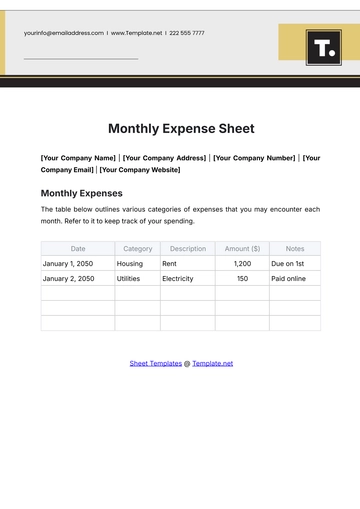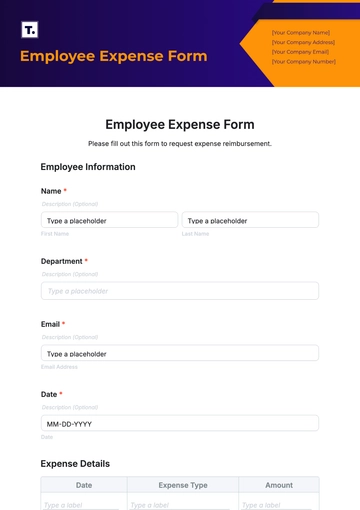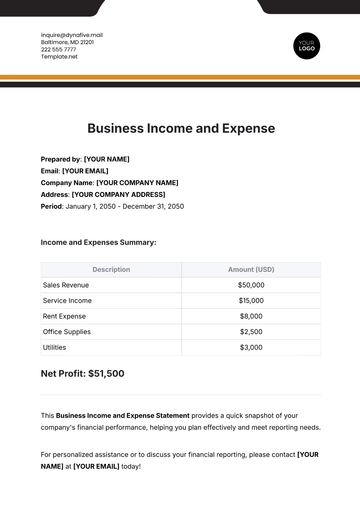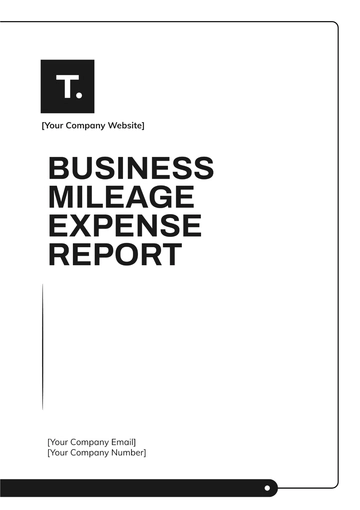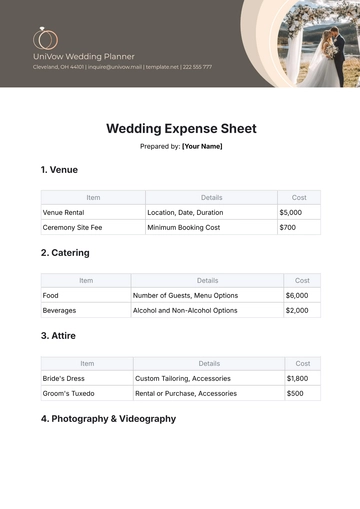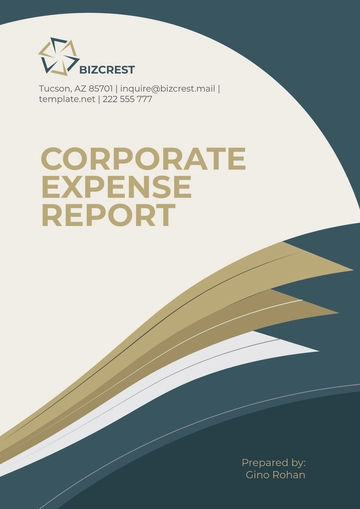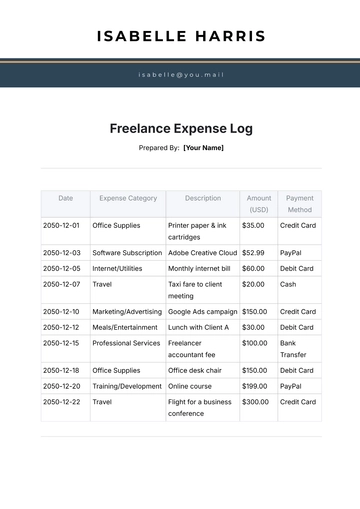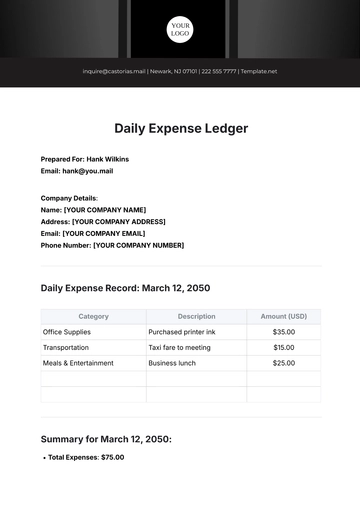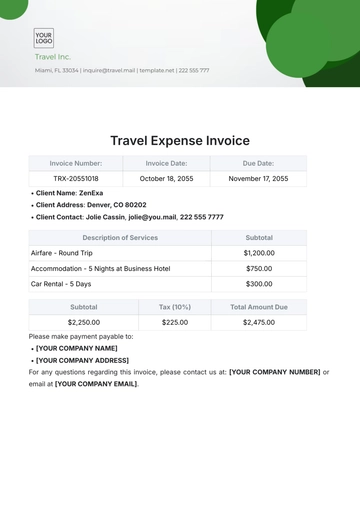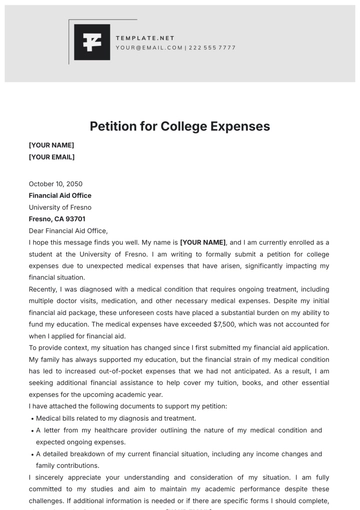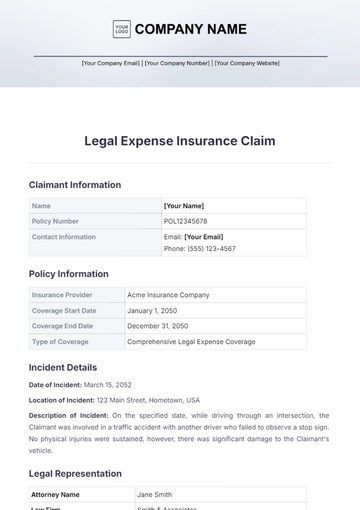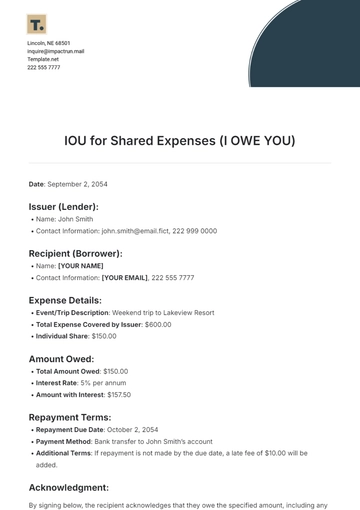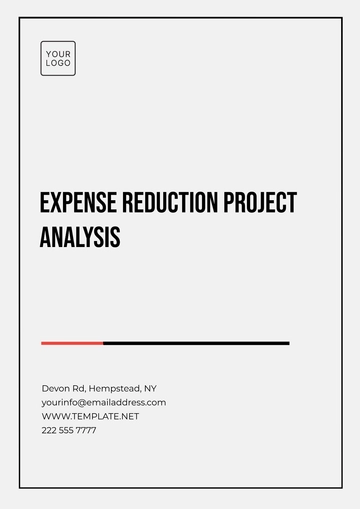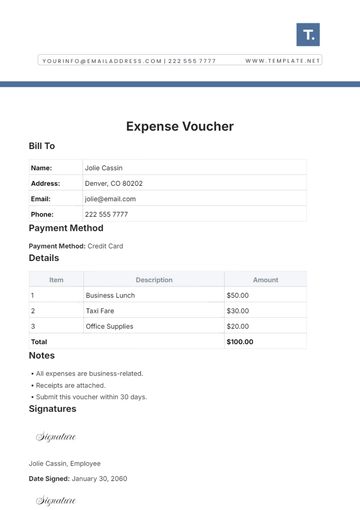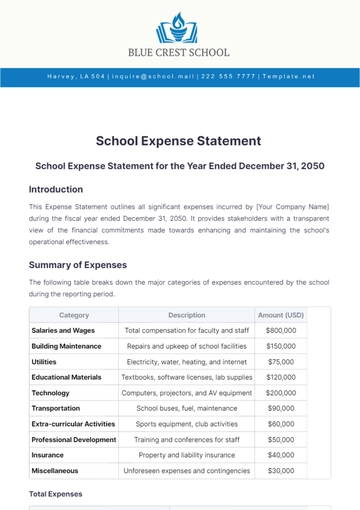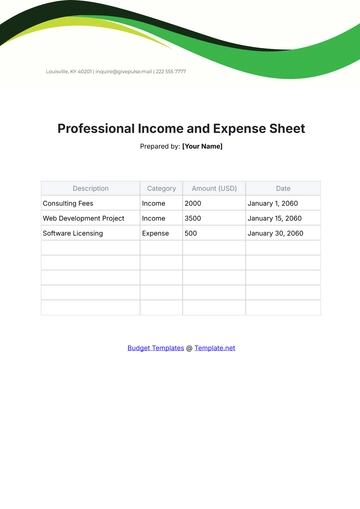Free Marketing Expense Portfolio

INTRODUCTION
The Marketing Expense Portfolio, meticulously prepared by the diligent team at [Your Company Name], serves as a comprehensive guide to managing and optimizing marketing expenditures. In a dynamic and ever-evolving business landscape, financial prudence and strategic allocation of resources are critical. This portfolio offers a roadmap to understanding, tracking, and strategically controlling your marketing expenses. It not only bolsters your financial planning but also empowers informed decision-making for maximum impact and profitability.
Effective management of marketing expenses is the cornerstone of sustainable growth and profitability. This document is tailored to provide a clear and organized overview of your marketing expenditures, ensuring transparency, accountability, and the ability to adapt swiftly to changing market conditions. Whether you're a startup aiming for rapid growth or an established corporation striving to maintain a competitive edge, this Marketing Expense Portfolio is your compass in the complex terrain of marketing finance.
By systematically categorizing and tracking your marketing expenses, you can identify trends, optimize budgets, and make data-driven decisions. This document will not only streamline your financial management but also empower your marketing team to strategically invest in the activities that deliver the highest returns.
With an eye toward your specific business goals and aspirations, this Marketing Expense Portfolio is a versatile tool for improving your financial planning, tracking your expenses, and ultimately achieving your marketing objectives. It is designed to stand the test of time, assisting you well in the future and evolving with the ever-changing marketing landscape.
EXPENSE CATEGORIES
Effective financial management involves a detailed breakdown of marketing expenses across various categories. The table below categorizes and elaborates on the key areas where marketing expenses are allocated:
CATEGORY | DESCRIPTION |
Advertising and Promotion | Encompasses expenses related to advertising campaigns, both traditional and digital. It includes costs for print ads, radio spots, pay-per-click (PPC) advertising, and social media advertising. In addition, it covers expenses for creative agencies, graphic design, and ad placements. |
Digital Marketing | Covers expenses related to online marketing efforts. It includes spending on website development, search engine optimization (SEO), social media marketing, email marketing platforms, and online advertising on platforms like Google Ads or Facebook Ads. |
Trade Shows and Events | This category encompasses expenses for booth rentals, travel and accommodation, event registration fees, promotional materials, and exhibition design. It also includes expenses for organizing and hosting events. |
Content Creation | This category includes expenses for creating and publishing content, such as blog posts, videos, podcasts, and whitepapers. |
Personnel | Expenses in this category pertain to salaries, benefits, training, and development of marketing staff. It also includes freelancers or agencies hired for specialized marketing projects. |
Miscellaneous | This category captures any other marketing expenses not covered by the above categories. |
CATEGORY | EXPENDITURE ([Month Year] - [Month Year]) |
Advertising and Promotion | $75,000 |
Marketing Expenses Chart:
Expense Categories:
Advertising and Promotion ($[00,000]): This category accounts for the largest portion of the marketing budget. It includes expenses related to various advertising campaigns, encompassing both traditional and digital channels. Such expenses may cover costs for print ads, radio spots, pay-per-click (PPC) advertising, social media promotions, as well as fees for creative agencies and graphic design services.
Digital Marketing ($[00,000]): The digital marketing category represents significant expenses allocated to online marketing efforts. These include investments in website development, search engine optimization (SEO), social media marketing, email marketing platforms, and online advertising on platforms like Google Ads or Facebook Ads.
Trade Shows and Events ($[00,000]): For businesses that participate in industry events, trade shows, and conferences, this category accounts for expenses such as booth rentals, travel and accommodation costs, event registration fees, promotional materials, and the design of exhibition displays. These expenses are vital for businesses looking to establish a strong presence in their industry.
Content Creation ($[00,000]): Content marketing is a critical component of modern marketing strategies. This category covers expenses associated with creating and publishing content, which may include blog posts, videos, podcasts, whitepapers, and other content formats. Expenditures within this category encompass costs for content writers, graphic designers, video production, and content distribution.
Personnel ($[00,000]): Personnel expenses signify investments in the skilled professionals required to execute marketing initiatives effectively. These costs include salaries, benefits, training, and development of marketing staff. Additionally, this category may cover expenses related to hiring freelancers or agencies for specialized marketing projects.
Miscellaneous ($[00,000]): The miscellaneous category captures any marketing expenses that don't fit within the other defined categories. Such expenses may include software subscriptions, office supplies, research tools, or unforeseen costs that don't fall into the other specified categories. This category is crucial for maintaining transparency and accounting for all marketing-related costs.
BUDGET ALLOCATION
Annual Budget
The total annual marketing budget for [Year]: $[000,000]
Allocation Breakdown
To ensure efficient allocation, the annual marketing budget of $[000,000] is distributed across the following expense categories:
Advertising and Promotion: $[00,000]
[Month Year] - [Month Year] Expenditure: $[00,000]
Digital Marketing: $[00,000]
[Month Year] - [Month Year] Expenditure: $[00,000]
Trade Shows and Events: $[00,000]
[Month Year] - [Month Year] Expenditure: $[00,000]
Content Creation: $[00,000]
[Month Year] - [Month Year] Expenditure: $[00,000]
Personnel: $[00,000]
[Month Year] - [Month Year] Expenditure: $[00,000]
Miscellaneous: $[00,000]
[Month Year] - [Month Year] Expenditure: $[00,000]
EXPENSE TRACKING
1. Monthly Tracking
We meticulously track monthly expenses for each category to ensure that the budget remains on course and to identify any variances that require attention. For example, by the end of March [Year], our 'Advertising and Promotion' expenses amounted to $[00,000], aligning with our budget allocation.
2. Quarterly Review
To maintain financial discipline, we conduct quarterly reviews of budget adherence. During the first quarter of [Year], our 'Digital Marketing' expenses reached $[00,000], in line with our allocation. These quarterly reviews allow us to spot and address any significant variances promptly.
The allocation of the annual marketing budget and rigorous expense tracking help us maintain budget discipline and ensure that resources are utilized effectively in alignment with our strategic goals.
PERFORMANCE ASSESSMENT
1. ROI Analysis
Evaluating the return on investment (ROI) for each expense category is a critical aspect of our marketing financial management. It helps us assess the effectiveness of our marketing expenditures and make informed decisions. For instance, based on our 2051 expenses, we have observed that our digital marketing efforts yielded an ROI of approximately [00]%, while our trade show and events category provided an ROI of [0]%. Understanding these metrics enables us to allocate resources more efficiently.
2. KPI Assessment
Key performance indicators (KPIs) serve as benchmarks to evaluate the success of our marketing initiatives. We closely monitor KPIs such as website traffic, conversion rates, and customer acquisition costs. By assessing our KPIs, we can gauge the impact of each expense category. For example, our content creation expenses led to a [00]% increase in website traffic, while our advertising and promotion category contributed to a [00]% increase in conversion rates. These insights guide our future budget allocations and strategic decisions.
FUTURE PLANNING
1. Budget Optimization
To ensure the efficient use of our marketing budget, we continuously seek opportunities for optimization. Our ROI analysis and KPI assessment play a crucial role in this process. For example, in light of our [Year] performance assessment, we are considering reallocating resources from the trade shows and events category to digital marketing, where we have observed a higher ROI. This proactive approach allows us to maximize the impact of our budget on achieving our marketing objectives.
2. Strategic Adjustments
Our marketing expense portfolio guides strategic adjustments to our budget allocation. For instance, based on our [Year] results, we are planning to increase our investment in content creation, which has demonstrated significant positive effects on our KPIs. This informed decision-making ensures that our budget aligns with our evolving marketing strategy and business goals, ultimately enhancing our financial efficiency and marketing effectiveness.
REPORTING AND COMMUNICATION
Effective reporting and communication are essential for transparent and efficient management of the Marketing Expense Portfolio at [Your Company Name]. This section outlines the processes for reporting and communicating financial information to relevant stakeholders.
Internal Reporting
To ensure transparency and alignment within the organization, marketing departments will provide regular reports on budget utilization and performance. These reports will be submitted on a quarterly basis.
Reports will include detailed breakdowns of expenses within each category, highlighting any variances from the approved budget. Any significant discrepancies will be explained and justified.
The internal reports will be shared with department heads, finance teams, and relevant decision-makers. This transparent approach allows for informed discussions and decision-making concerning financial matters.
Management Meetings
Regular management meetings will be scheduled to discuss the Marketing Expense Portfolio. These meetings will provide a platform for department heads, marketing teams, and finance professionals to evaluate the portfolio's performance.
During these meetings, department heads will present the expense reports for their respective departments. They will explain any notable achievements, areas of concern, and proposed adjustments to the budget allocation.
The discussions in these meetings will guide strategic decisions related to budget optimization, performance enhancement, and any necessary adjustments. It ensures that the marketing expenses remain in alignment with [Your Company Name]'s overall goals and objectives.
Robust internal reporting and effective communication within the organization are essential for maintaining a healthy financial management process. It allows for proactive decision-making, early identification of issues, and optimization of the marketing budget. This transparent and communicative approach ensures that marketing expenses are strategically managed for sustained growth.
CONCLUSION
The Marketing Expense Portfolio at [Your Company Name] is a vital resource for transparent and efficient financial management within your marketing department. This versatile document can be tailored for various businesses to enhance budget planning, expense tracking, and performance assessment well into the future.
Annual Review
To ensure the continued effectiveness of our budgeting process, an annual review of this Marketing Expense Portfolio will be conducted. This review will involve revisiting our expense categories, allocation strategies, and the overall budget structure to reflect the evolving needs and goals of [Your Company Name].
Periodic Revisions
Business conditions, marketing trends, and economic landscapes change over time. Thus, this document will be subject to periodic revisions as deemed necessary. Such revisions may involve adjusting expense categories, reallocating budgets based on performance, and incorporating best practices for cost management.
A commitment to regular reviews and revisions ensures that our Marketing Expense Portfolio remains a dynamic and adaptable tool. It empowers us to align our financial resources with strategic objectives and maintain financial prudence in the ever-evolving marketing landscape.
Date Prepared: [Month Day, Year]
- 100% Customizable, free editor
- Access 1 Million+ Templates, photo’s & graphics
- Download or share as a template
- Click and replace photos, graphics, text, backgrounds
- Resize, crop, AI write & more
- Access advanced editor
Elevate your marketing strategy with our Marketing Expense Portfolio Template, available exclusively on Template.net. Crafted by industry experts, this editable and customizable template streamlines expense tracking. Seamlessly integrate keywords and leverage our Ai Editor Tool for unparalleled efficiency. Maximize ROI and optimize resources effortlessly with this essential tool for marketing professionals.

